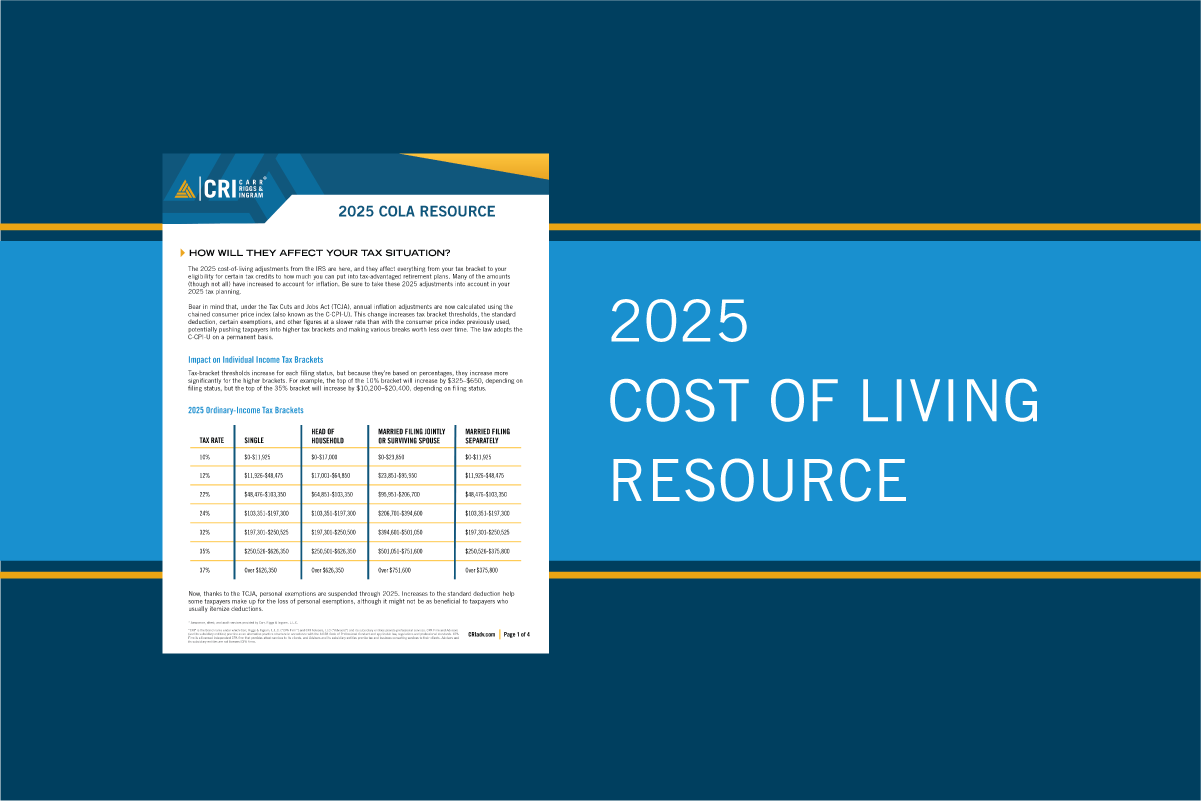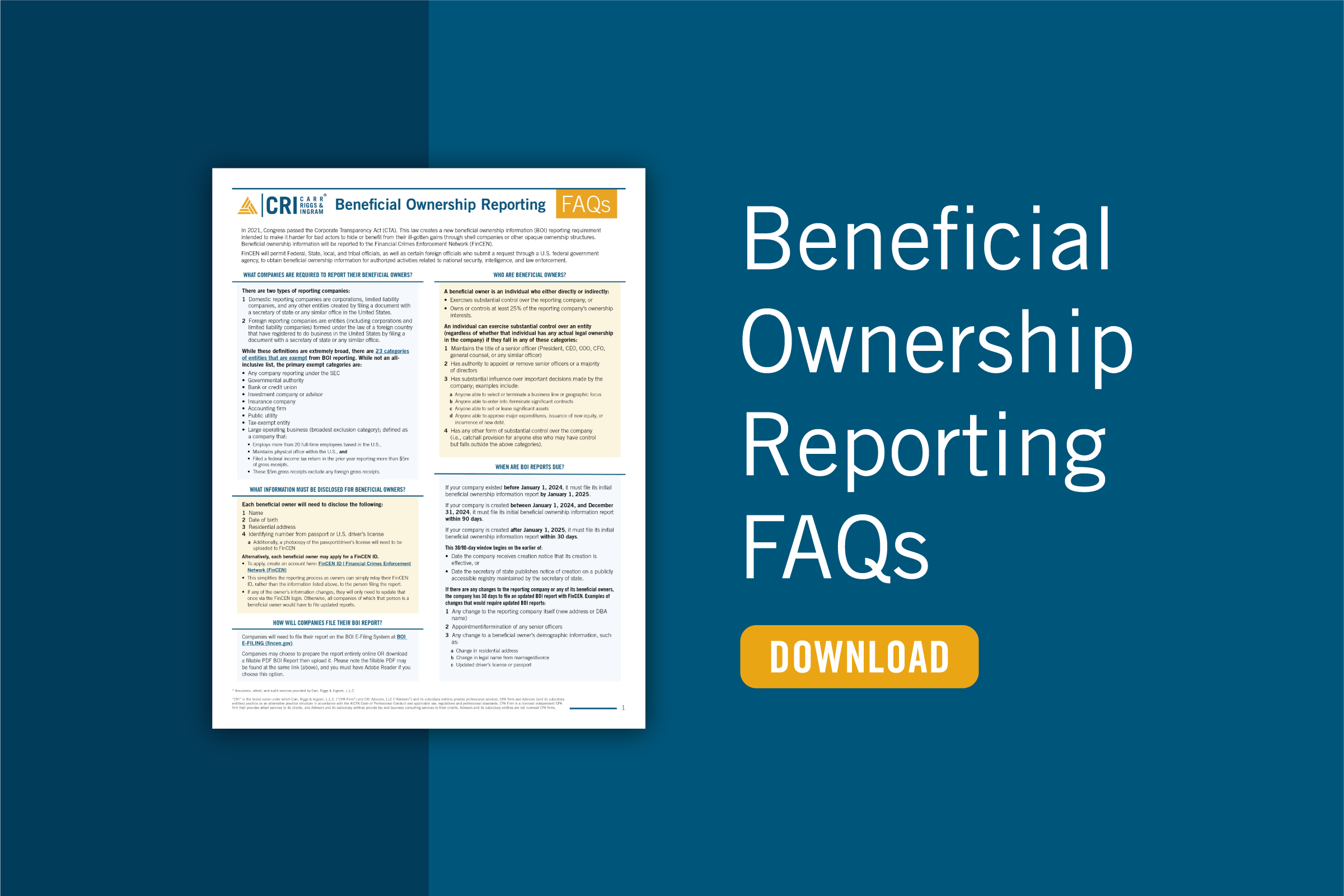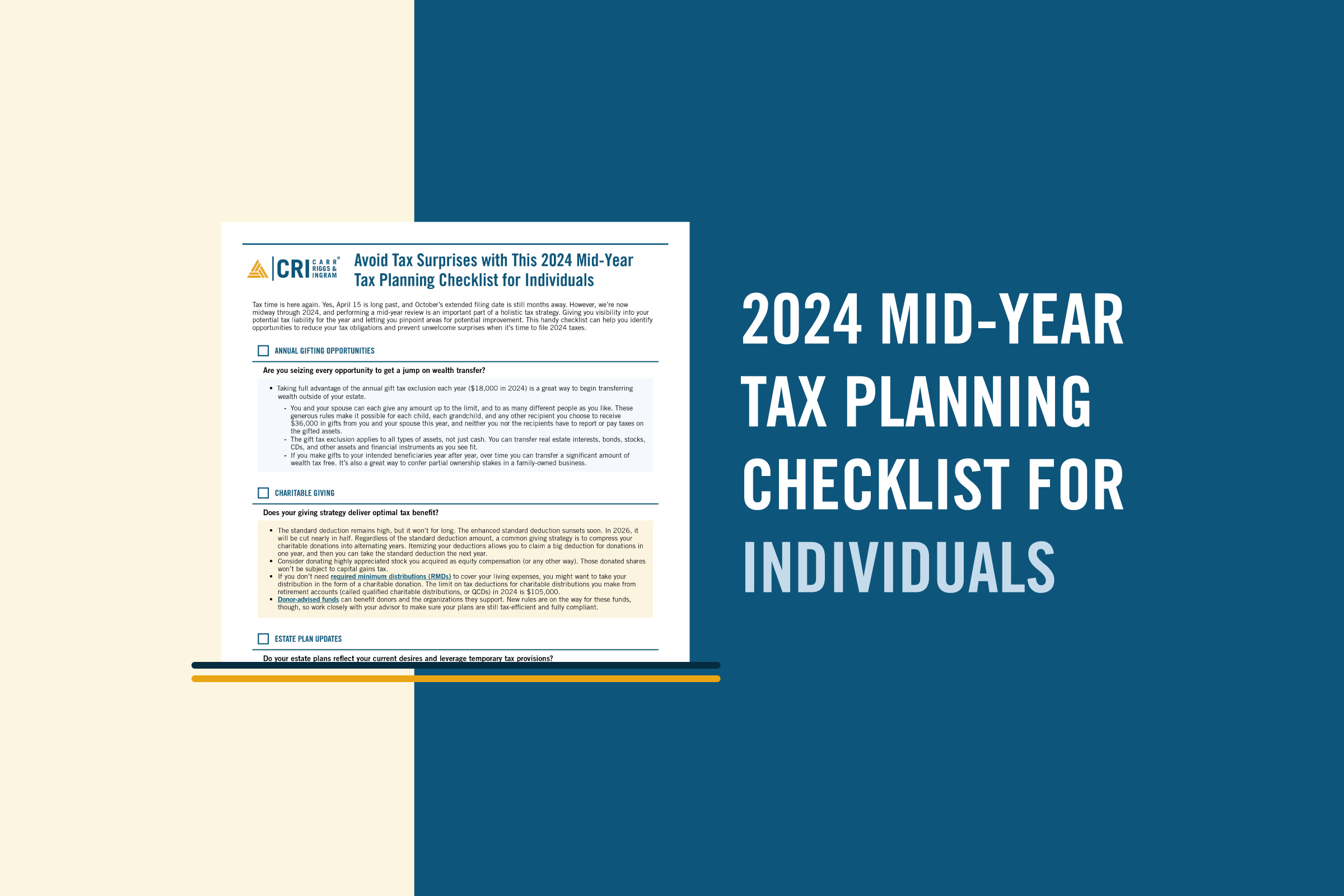Captive Insurance Taxation
- Contributor
- Scott Bailey
Jan 19, 2022
A captive insurance company (or captive) is a licensed insurer generally established to meet the risk management needs of a specific company or group of companies. Captive structures are primarily formed either to supplement existing insurance coverages, fund blocks of risk exposures, or provide coverage for atypical risks. Utilizing captive programs enables businesses to manage these risks while also taking advantage of tax benefits. A captive must be licensed as an insurance company through a state or foreign jurisdiction and satisfy certain requirements for the premiums to be deductible as insurance for federal tax purposes. Assuming that the captive meets the requirements, its taxable income is typically based on underwriting income with some required adjustments for tax purposes. However, certain qualifying insurance companies may elect to be taxed only on taxable investment income.
The Four Pillars of Captive Insurance
Though captive structures have existed for many years, activity in the tax court since 2016 has enabled us to determine what the IRS believes to be a well-functioning captive program. A captive must satisfy the following criteria to qualify as an insurance company for federal tax purposes:
- Risk Transfer – For a captive program to withstand scrutiny, the risk to be insured must be transferred outside the at-risk entity. As such, consideration must be paid to the capital structure and ownership of a prospective captive to ensure effective risk transfer is achieved.
- Risk Distribution – Though the tax courts have not afforded any bright-line tests for determining an appropriate distribution of risk, business-considering captive owners must determine that premiums collected by the captive address a sufficient number of unrelated risks. In essence, the premiums collected by the captive must cover a sufficient number of separately identifiable risks.
- Insurance Risk – Risks managed by the captive must be risks of loss arising through insurance coverages. A captive program cannot be utilized to transfer business risks or to manage investment losses. Premiums written by the captive must be for real risks through an insurance process.
- Common Notions of Insurance – In its function, the captive must function in the customary fashion of an insurance company. This is to say the captive should write premiums based on risk, establish reserves for unpaid risks of loss, and fund those losses to ensure the liquidity of the captive.
Captive Insurance Taxation Nuances
Captive insurance companies are usually taxed on underwriting income after required adjustments for tax purposes. Captive owners may also deduct losses on unpaid losses as they are incurred, providing an accelerated deduction timeframe from typical insurance arrangements or traditional self-insurers. Utilizing captives to transfer risk can provide a residual benefit of significant reductions in effective tax rates on insurance activity.
In addition, smaller captives can make a tax election (under IRC 831(b)) to be taxed only on their taxable investment income. The 831(b) election is currently available to companies with net or direct written premiums of no more than $2.45 million for tax year 2022. Net investment income includes taxable non-insurance income less qualifying investment expenses.
This election can be especially beneficial to captive owners, providing a full tax deduction for insureds' paid premiums while the captives are only taxed on net investment income.
Bring Your Captive Insurance Taxation Benefits into Greater Focus
The CRI team is ready to advise you regarding how your organization can benefit from establishing a captive insurance company. We might even uncover small details that are hard to see at first glance. Contact us today!























































































































































































































































































































































































































































































